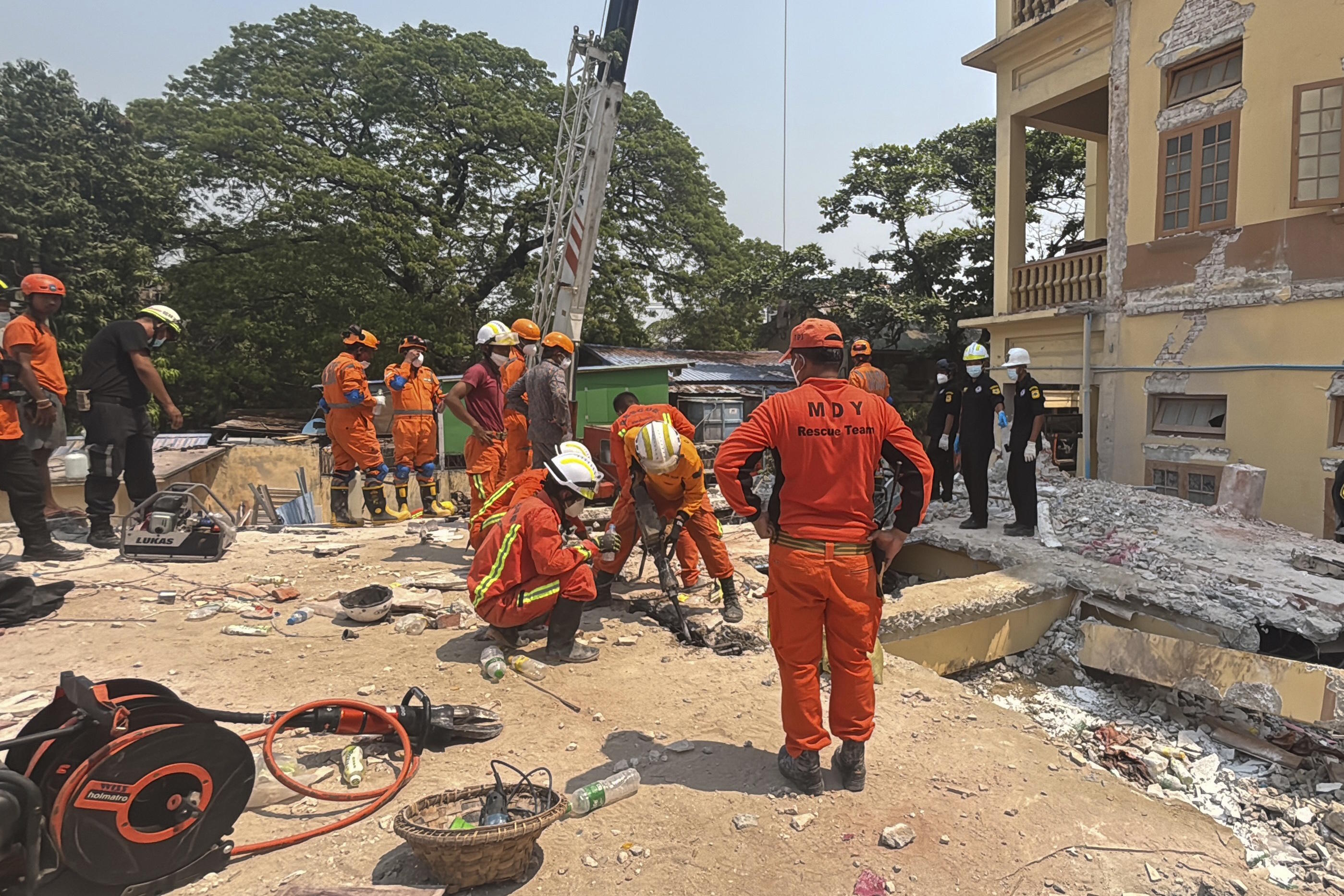In some neighborhoods of Mandalay, residents complain that the smell of burnt flesh lingers inside their homes because improvised funeral pyres are being set up in the streets to burn the earthquake victims. The crematoriums are overwhelmed, and bodies are piling up as families try to cremate their loved ones. "Yesterday we cremated over 300 bodies. And so far this morning, we're at 200," a worker told the local newspaper Myanmar Now on Monday.
According to many witnesses, in some street corners of Mandalay, the second-largest city in Myanmar and the most devastated by Friday's powerful earthquake, many bodies are decomposing rapidly due to the extreme heat these days. They were pulled from under the rubble but have not been identified or claimed by any family. There are over 2,000 dead and hundreds missing. The latest report from the military junta also reveals 3,900 injured.
"What we are seeing in Myanmar is a level of devastation that has not been seen in over a century in Asia," reads a note from the Red Cross, which has volunteers deployed in the affected areas of the country's center. They are assisting in the rescue efforts with local teams and rescue brigades that have already been sent by a dozen countries.
"The needs are enormous. There was already a humanitarian crisis before the earthquake, and this event has only worsened the already difficult situation of the population. This is a country where over 19 million people were already in need of urgent humanitarian assistance due to the conflict that has been going on for the past four years," says Michael Dunford, director of the UN World Food Program in Myanmar, referring to the bloody civil war following the 2021 military coup.
Control of Myanmar is now divided between the coup regime, which governs in major cities, and ethnic armies, which dominate border areas. Sagaing, the epicenter of the earthquake near Mandalay, has been one of the strongholds of resistance for rebel groups. In that area, just an hour after the quake, the military launched an airstrike. The bombings continued over the weekend and on Monday.
"People were already terrified by the earthquake, and with the chaos, it was impossible to seek refuge in the air-raid shelters," say sources from the national unity government, formed in exile by lawmakers who won the 2020 elections not recognized by the military. Pro-democracy groups have called for a two-week ceasefire in the fighting. However, they also do not represent the ethnic militias who are still fighting against the army these days and who, according to experts, may see an opportunity in the current chaos to advance positions in other regions controlled by the military.
While rescue operations in Mandalay are receiving more help and medical supplies are arriving in the city, the situation is much more uncertain in the municipality of Sagaing, located in the region of the earthquake's epicenter, where many voices warn of brutal destruction in this place with 300,000 inhabitants and from which not many images are emerging. "The earthquake has overwhelmed the health facilities in the most affected areas, with three hospitals destroyed and 22 partially damaged," says a WHO report.
People rescued after 60 hours
Amid all this disaster, there is some light with the stories emerging about rescues: in Sagaing, four people were rescued alive on Monday after being trapped for over 60 hours under the rubble of a school. In Mandalay, a woman was pulled out unharmed from the remains of a hotel. A day earlier, 29 people were also rescued from a collapsed apartment building.
Among the most heartbreaking stories is the rescue of a pregnant woman that had a tragic ending: she was trapped for 55 hours under a collapsed apartment building in Mandalay, and a Chinese team managed to free her by amputating one of her legs. However, the woman bled to death shortly after. "We tried everything to save her," said one of the rescuers.
Another tragedy unfolded in the city of Kyaukse, about 44 kilometers from Mandalay, when rescue teams reached a preschool where only a pile of bricks with protruding iron bars remained alongside several Minions and Spiderman backpacks and stuffed animals. It is believed that there were about 70 children in the school when the earthquake struck. Neighbors say at least 40 have died.
Many Burmese continue to spend the night outside their homes out of fear of new aftershocks like the ones felt on Sunday, when some cracked buildings that were still standing also collapsed. On social media, many images and videos circulate about what is happening in major cities in Myanmar, while there is very little information about what is happening in other rural areas also affected.
The military junta, which has led Myanmar to be one of the most isolated countries in the world, where the media is completely muzzled, does not allow the entry of foreign press. Only a few international agencies, which had local journalists, are reporting from the ground.
